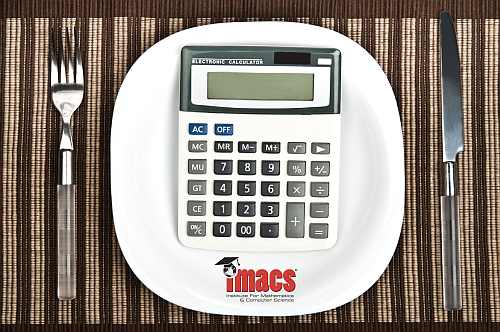
Last week, The Atlantic published an excellent article questioning the trend toward requiring convoluted explanations of mathematical thinking in Common Core-aligned math classes. The authors rightly pointed out that verbal explanations are hardly the only way of determining whether a student understands a concept and that many of the brightest mathematical minds are verbally challenged.
The theory that if you cannot explain, you do not understand does logically lead to the conclusion that if you understand, you can explain. (IMACS Mathematical Logic students will recognize this as an example of contrapositive inference.) That theory, however, is completely false, yet it continues to drive the misguided practices of Common Core-aligned pedagogy to the detriment of another generation of students who, we worry, will be irreparably damaged in their understanding and appreciation of math.
Visual explanations are often a natural way to demonstrate mathematical understanding when designed thoughtfully and taught well, but even they can be gamed. There is another way, however, that is an effective measure of true understanding — demonstrating how well you can apply your knowledge to a novel situation. This approach does not call specifically for a verbal, visual or symbolic explanation, but it does require that teachers have the mathematical depth to recognize understanding when presented in a variety of explanatory modes, not just how a scoring rubric of model answers dictates.
Consider for a moment the art and science of cooking. Some people can only follow a recipe, and many have compared this to when students can only "plug 'n chug" math formulas and algorithms. Some people read cooking magazines or watch the Food Network and then impress with the right vocabulary at parties, the same way verbally skilled students will learn the right Common Core-friendly phrases to use in answering certain types of problems. Then there are the chefs, the ones who understand why certain ingredients and/or cooking methods work well together and what the fancy foodie talk actually means. What can they do with their genuine understanding?
If you've never watched the television show Chopped, take a moment. Competing against the clock and other chefs, each contestant must use everything in a basket of mystery ingredients to prepare an appetizer, entrée or dessert. When the ingredients are unveiled, it is not unusual for them to include such oddities as grasshoppers, gummy bears and leftover pizza. Talk about a novel situation!
It's hard to imagine a single traditional recipe that calls for such ingredients, or what erudite words you could utter about the culinary characteristics of a grasshopper. But leave it to the chefs on Chopped to shred the pizza crust, melt the gummy bears and use them with other ingredients to make breaded and glazed gourmet grasshoppers with a pepperoni pâté!
Mathematics is a lot like cooking. When you have a genuine understanding of mathematical concepts, you know what to do when faced with a problem that is unlike any you’ve seen before but that requires putting your knowledge together in a new way. Whether you can impress the Pulitzer Prize people as well is beside the point. Bon appétit!








